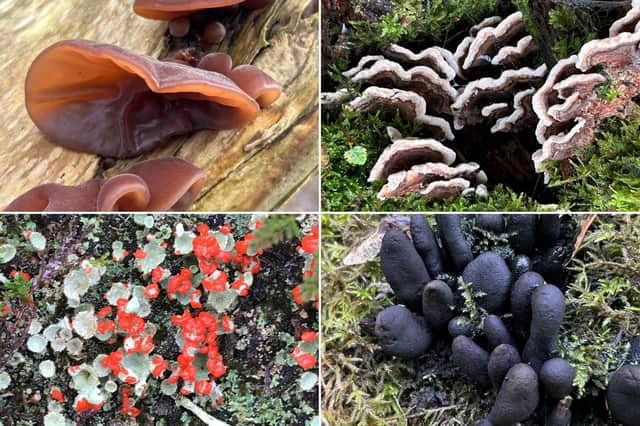Yorkshire moors home to various fungi and lichen you can see throughout the winter


Dead Man's Fingers, Jelly Ears and Turkey Tail are among the species of fungi while Reindeer, Pixie Cup and Oak Moss are among the lichens that are more noticeable on the moors and in upland woodland at this time of year, as other vegetation dies back for the winter.
Around 60 species of lichen are found on heaths and moorlands where they are most abundant in nutrient-poor areas. Lichen are known to thrive in damp environments with clean air, making the moors and uplands of Yorkshire an ideal home.
Advertisement
Hide AdAdvertisement
Hide AdTracy Johnson, coordinator of the Nidderdale Moorland Group, said: “Lichen are one of the first species to appear on our managed moorland, on areas of recent controlled burns. They are an indicator species – meaning they are highly sensitive to even subtle environmental changes such as air pollution, so where we see them growing it means the habitat is healthy.
“Lichen and certain fungi are here all year round but especially the lichens are more noticeable in the autumn and winter. There is amazing biodiversity on managed moorland, often tucked away and hard to spot. It is one of the joys of winter to take time to seek out these wonderful hidden treasures.”
Some fungi such as Dead Man’s Fingers feed on damp timber, leaving behind a nutrient-rich residue which in turn is eaten by invertebrates. They are therefore an important element of the food chain.
"Yorkshire’s sporting estates generally have a mix of habitats, from open moorland, to rushes, bogs, rivers, becks and upland woodland, home to a variety of rare species.
Advertisement
Hide AdAdvertisement
Hide AdAndrew Gilruth, chief executive of the Moorland Association, said: “It’s a common misconception that managed moorlands have nothing but heather. In fact a wide range of mosses, dwarf shrubs, fungi and plants have evolved to cope with the harsh conditions in the uplands. They are ideally suited to the cooler temperatures year-round and cold winters.
"Moorland managers protect this habitat to ensure the best conditions for bilberry, crowberry and peat-forming plants such as sphagnum mosses, as well as these amazing lichens and fungi.”
Lichens vary in colour depending on the species, but they can be silver-grey, grey-green, yellow, red or orange, adding a splash of colour and interest to a winter walk.